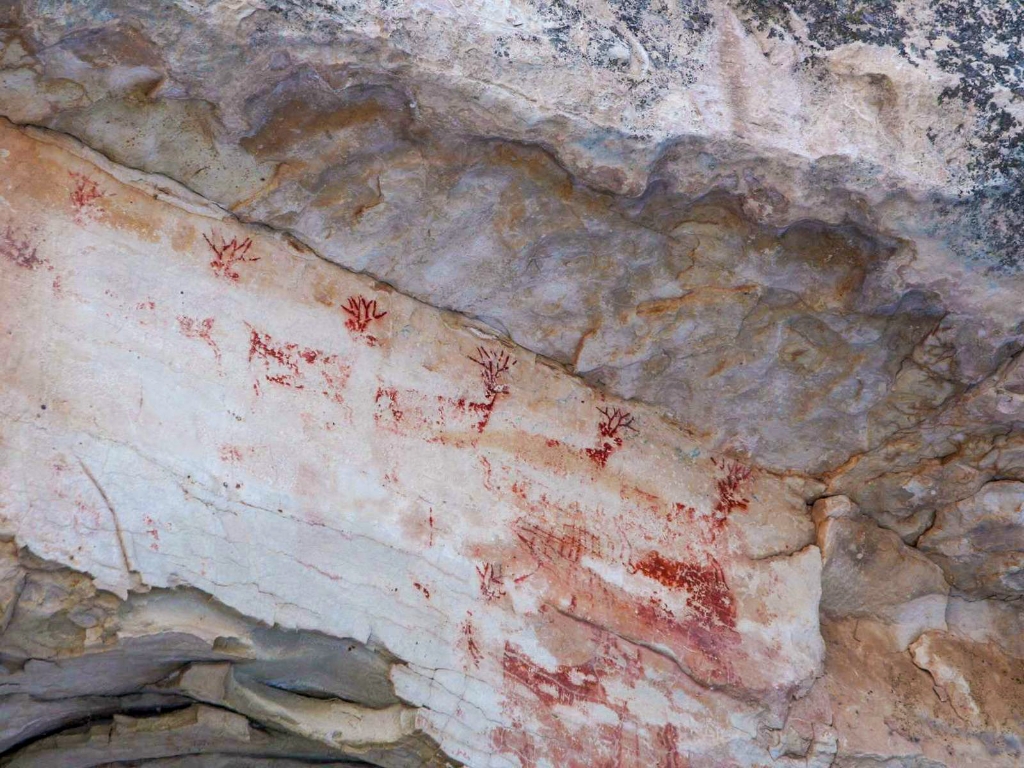
A short walk down the Bright Angel Trail gives an excellent introduction to the rich human history that is visible from this path. Right after passing through the first, or upper tunnel, pause and look above the sloping cliff on your left. Far above, you can see pictographs painted in red onto a band of rock beneath an overhanging ledge.
These deer pictographs were left by ancestral canyon occupants to mark their path down into this side canyon. A variety of additional symbols and images can be seen through a pair of binoculars. The site, known as Mallery's Grotto, dates between 4000 years ago (2000 BCE) and 1950.
It contains Archaic period elements and Cohonina culture elements. Historic charcoal inscriptions are attributed to the Havasupai. This route into the canyon was used by the Havasupai people who lived and farmed at Havasupai Gradens (formerly know as Indian Garden), down in the relatively flat riparian area, you can see 3000 feet (914 m) below the canyon rim. When Grand Canyon National Park was established, they were no longer permitted to live there.
The location was given the name, Mallery Grotto, after Garrick Mallery (1831-1894), an authority on the pictographs of the North American Indians. Mallery worked for the U.S. Bureau of Ethnology.
Please help us protect this site by staying on the trail and enjoying it from afar.
Is there something we missed for this itinerary?
Itineraries across USA


















































